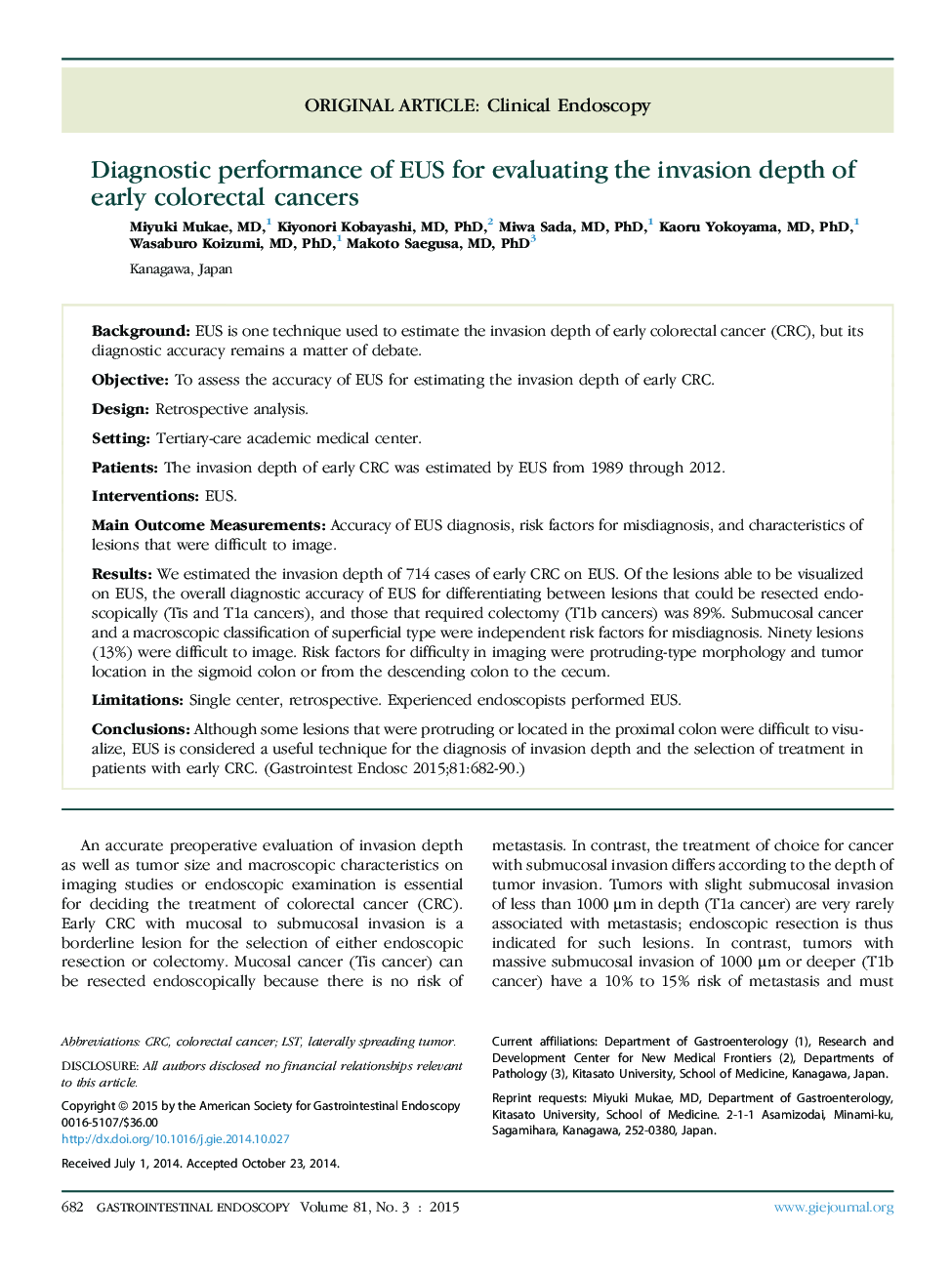| Article ID | Journal | Published Year | Pages | File Type |
|---|---|---|---|---|
| 6097418 | Gastrointestinal Endoscopy | 2015 | 9 Pages |
BackgroundEUS is one technique used to estimate the invasion depth of early colorectal cancer (CRC), but its diagnostic accuracy remains a matter of debate.ObjectiveTo assess the accuracy of EUS for estimating the invasion depth of early CRC.DesignRetrospective analysis.SettingTertiary-care academic medical center.PatientsThe invasion depth of early CRC was estimated by EUS from 1989 through 2012.InterventionsEUS.Main Outcome MeasurementsAccuracy of EUS diagnosis, risk factors for misdiagnosis, and characteristics of lesions that were difficult to image.ResultsWe estimated the invasion depth of 714 cases of early CRC on EUS. Of the lesions able to be visualized on EUS, the overall diagnostic accuracy of EUS for differentiating between lesions that could be resected endoscopically (Tis and T1a cancers), and those that required colectomy (T1b cancers) was 89%. Submucosal cancer and a macroscopic classification of superficial type were independent risk factors for misdiagnosis. Ninety lesions (13%) were difficult to image. Risk factors for difficulty in imaging were protruding-type morphology and tumor location in the sigmoid colon or from the descending colon to the cecum.LimitationsSingle center, retrospective. Experienced endoscopists performed EUS.ConclusionsAlthough some lesions that were protruding or located in the proximal colon were difficult to visualize, EUS is considered a useful technique for the diagnosis of invasion depth and the selection of treatment in patients with early CRC.
